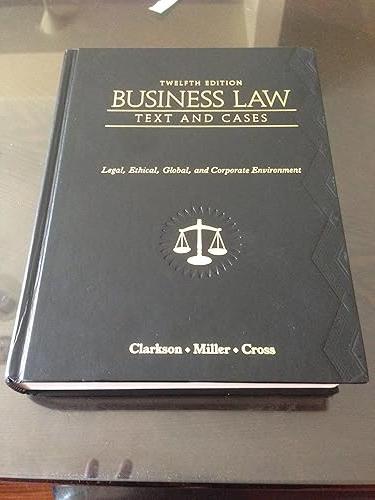On September 26, 1985, the Port of Seattle (Port) entered into a thirty-year lease with APL Limited,
Question:
On September 26, 1985, the Port of Seattle (Port) entered into a thirty-year lease with APL Limited, American President Lines, LTD, and Eagle Marine Services, LTD (collectively, APL) for premises at Terminal 5 for loading and unloading shipping container ships. Terminal 5 was substantially rebuilt and cranes were constructed and installed. The cranes at issue here are built to run on steel crane rails 100 feet apart, embedded in a concrete apron, and supported by specially designed steel-reinforced concrete and piers engineered specifi cally to support the cranes. The cranes themselves are steel structures that are 198 feet tall, 85 feet wide, more than 370 feet long and each weighs over 800 tons. They are hard wired to a dedicated high voltage electrical system that includes a power substation built specifi cally for Terminal 5 to power the cranes.
The cranes are attached to the power substation by cables that are more than two inches thick. The cranes have been in use continuously on Terminal 5 since their construction over twenty years ago.
APL brought suit * * * for a refund of sales tax paid on the rent for the cranes. The State moved for summary judgment, arguing that the cranes were personalty [personal property] and, as such, subject to sales tax. The trial court granted the motion * * * .
APL appeals * * * .
* * * *
Real property, for tax purposes, is defi ned as “the land itself * * * and all buildings, structures or improvements or other fi xtures of whatsoever kind thereon.” [Emphasis added.]
* * * *
Case law dictates that to determine whether the cranes are personal property or real property, [that is,] fi xtures, we apply the common law test. Under this test, we must consider the following three prongs:
(1) Actual annexation to the realty, or something appurtenant thereto; (2) application to the use or purpose to which that part of the realty with which it is connected is appropriated; and (3) the intention of the party making the annexation to make a permanent accession to the freehold.
All three prongs must be met for a chattel [movable property] to become a fi xture. Both parties agree that the second prong is met in this instance but dispute the fi rst and third prongs. [Emphasis added.]
Applying a confusing factual scenario, the trial court decided that the fi rst prong, annexation, was not met and therefore it need not consider any of the other facts presented. This was error because the determinative factor for whether a chattel annexed to real property becomes part of the real property or retains its character as personal property is the third prong: the intent with which the chattel was annexed to the land.
Intent can be determined from the nature of the chattel attached and its relation or necessity to the activity conducted on the land and the manner in which it is annexed.
When the owner and the person that annexes the chattel are one and the same, a rebuttable presumption arises that the owner’s intention was for the chattel to become part of the realty. [Emphasis added.]
* * * *
In its oral ruling, the trial court itself recognized that it had not examined the facts regarding the Port’s intent to annex these cranes.
Because annexation is so intertwined with the intent to annex, one cannot be examined without the other. * * * The factual inferences that can be drawn from the evidence presented should be permitted to be argued to the trial court. Because the trial court did not consider these inferences, summary judgment was inappropriate. We reverse.
Questions:-
1. Why did it matter to the parties in this lawsuit whether the cranes were fixtures or not?
2. Did the fact that the appellate court reversed the judgment of the trial court mean that the cranes were fixtures?
Explain.
Step by Step Answer:

Business Law Text And Cases Legal Ethical Global And Corporate Environment
ISBN: 9780538470827
12th Edition
Authors: Kenneth W. Clarkson, Roger LeRoy Miller, Frank B. Cross





